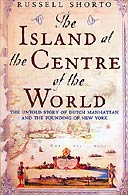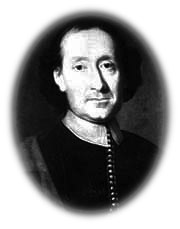Review: Book
The Island at the Centre of the World: The Untold Story of Dutch Manhattan and the Founding of New York, by Russell Shorto, 2004
 Surely the citizens of the USA would have by now have worked out the history about their first colonists.
Surely the citizens of the USA would have by now have worked out the history about their first colonists.
They probably thought so until the research behind this book surfaced and now they can read about the real history from this author, Russell Shorto.
This book is the precursor to Russell Shorto’s later book, Amsterdam, reviewed earlier – click here. Both are fascinating reads.
Up unto the research and this subsequent book, the Dutch were not given much credit for their role in the early days of the US colonies. All the emphasis was on the pilgrims and their early days. This was not quite correct.
 The story of the Dutch colony and how the new settlers adopted the practices of Amsterdam are what set the tone ultimately for the new country. It was the Dutch who established New Amsterdam as a free trade gateway, with the then revolutionary ideals of democracy, religious tolerance and acceptance of anyone who wished to settle and work hard, and set up businesses and to contribute. The pilgrims to the north were of the kind to kill off anyone with different ideas and especially anyone with different religious beliefs. Maybe the pilgrims were on a par with today’s Tea Party.
The story of the Dutch colony and how the new settlers adopted the practices of Amsterdam are what set the tone ultimately for the new country. It was the Dutch who established New Amsterdam as a free trade gateway, with the then revolutionary ideals of democracy, religious tolerance and acceptance of anyone who wished to settle and work hard, and set up businesses and to contribute. The pilgrims to the north were of the kind to kill off anyone with different ideas and especially anyone with different religious beliefs. Maybe the pilgrims were on a par with today’s Tea Party.
New Amsterdam was taken over in 1664 by the English. What made this usual was that the English allowed the settlement to continue as it did before and to expand its free trade practices. This was not the usual way of the English at the time. Normally it would have brought everyone into line, a few hangings and tortures to assist, so that any settlement they took over quickly did things in the way the English.
Because of this acceptance of leaving the place to operate as before, the newly named New York flourished. People kept arriving from all over the world to settle or to pass through and all the former practices of tolerance towards religions and other migrants continued. Unfortunately the dark chapter of slavery was just getting under way.
The whole story as told by Russell Shorto is riveting and entertaining; although around the middle chapters there was maybe too much detail on who did what and when etc.
 Russell Shorto brings to life the main characters of New Amsterdam such as Peter Stuyvesant, Adriaen van der Donck, and let’s not forget Henry Hudson and his early journeys.
Russell Shorto brings to life the main characters of New Amsterdam such as Peter Stuyvesant, Adriaen van der Donck, and let’s not forget Henry Hudson and his early journeys.
The parallel story of the documents on which the story is based is also totally amazing. These New Amsterdam records were passed around, traveled by coach between colonies, were sent by boat to England and then sent back, several places in which they were stored burnt down; they were thrown at one stage out a window; in a more recent fire they survived on the bottom shelf that was protected when everything else fell on top. They were down there because no-one knew what to do with them.
In the 1990s an archivist found them but they could not read them as the Dutch language had changed so drastically in 400 years. The rediscovered text was unreadable to the normal Dutch scholars. Finally a special linguist was found and he commenced work and at the time of the book, had produced 20 volumes which has attracted a host of the researchers anxious to uncover and correct the history of the early colonies.
There’s an excellent review in the Guardian – click here.
This is another great book by Russell Shorto!
——————————————–
Recommended: rating 10/10
——————————————-
Paul Costigan, 17 June 2014